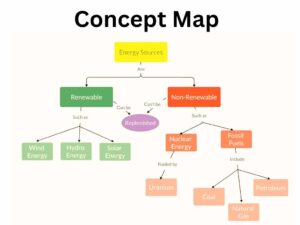Have you ever wondered why you sometimes make snap decisions, while other times you carefully weigh your options? Why do we often rely on gut feelings, even when we know we should think things through?
As an entrepreneur and writer who’s spent years honing my decision-making skills, I’ve discovered that understanding the concept of “thinking fast and slow” can be a game-changer.
In this post, we’ll dive deep into this fascinating topic, exploring how our minds work and how we can harness the power of both quick intuition and careful analysis.
Let’s embark on this journey to understand our minds better and learn how to think more effectively!
The Two Systems of Thought
At the heart of “thinking fast and slow” lies the concept of two distinct systems of thought. This idea was popularized by Nobel laureate Daniel Kahneman in his groundbreaking book, “Thinking, Fast and Slow.” As someone who’s read this book multiple times and applied its principles in my business ventures, I can attest to its profound impact.
System 1: Fast, intuitive, and automatic
System 2: Slow, deliberate, and effortful
Think of System 1 as your mind’s autopilot – it’s always on, processing information quickly and effortlessly. System 2, on the other hand, is like your mind’s conscious pilot – it kicks in when you need to focus and analyze complex problems.
System 1: Thinking Fast
System 1 is our brain’s quick-response team. It’s responsible for:
- Instinctive reactions
- Emotional responses
- Intuitive judgments
- Pattern recognition
As an entrepreneur, I’ve often relied on my System 1 thinking to make split-second decisions in high-pressure situations. It’s what allows us to navigate familiar environments without conscious effort and react swiftly to potential threats.
Example: When you’re driving and suddenly see a red light, you don’t need to consciously think about stopping – your System 1 takes care of that almost instantly.
System 2: Thinking Slow
System 2 is our brain’s analytical powerhouse. It handles:
- Complex calculations
- Logical reasoning
- Critical analysis
- Focused attention
In my writing career, I engage System 2 when crafting intricate plot lines or analyzing market trends. It’s the system we use when we need to concentrate and solve challenging problems.
Example: When you’re planning your monthly budget or learning a new skill, you’re primarily using System 2 thinking.
The Interplay Between Fast and Slow Thinking
One of the most fascinating aspects of our cognitive processes is how System 1 and System 2 interact. They’re not isolated; rather, they work in tandem, often seamlessly switching between each other.
System 1 is always active, providing quick interpretations of our environment. System 2 usually accepts these interpretations but can step in to override them when necessary. This interplay is crucial for efficient decision-making and problem-solving.
In my experience as a digital marketer, I’ve found that the most effective strategies often arise from a balance of intuitive insights (System 1) and data-driven analysis (System 2).
Cognitive Biases: When Fast Thinking Fails Us
While System 1 is incredibly useful, it can sometimes lead us astray. Cognitive biases are systematic errors in thinking that occur when our brains take shortcuts in processing information. These biases are often a result of our System 1 thinking.
Common cognitive biases include:
- Confirmation bias: Seeking information that confirms our existing beliefs
- Anchoring bias: Relying too heavily on the first piece of information encountered
- Availability heuristic: Overestimating the likelihood of events we can easily recall
I’ve fallen prey to these biases in my own decision-making processes. For instance, I once launched a product based on my gut feeling about market demand, without conducting proper research. The result? A costly lesson in the importance of balancing intuition with data.
Heuristics: Mental Shortcuts in Action
Heuristics are mental shortcuts that help us make decisions quickly. They’re a key feature of System 1 thinking and can be incredibly useful in many situations. However, they can also lead to errors when applied inappropriately.
Common heuristics include:
- Representativeness heuristic: Judging the probability of something based on how closely it resembles our mental model
- Availability heuristic: Estimating the likelihood of an event based on how easily we can recall similar instances
- Affect heuristic: Making decisions based on emotional reactions
The Impact on Decision Making
Understanding the interplay between fast and slow thinking has profound implications for decision-making. Let’s look at a comparison of how these systems influence our choices:
| Aspect | Fast Thinking (System 1) | Slow Thinking (System 2) |
|---|---|---|
| Speed | Rapid | Deliberate |
| Effort | Low | High |
| Accuracy | Variable | Generally higher |
| Bias susceptibility | High | Lower |
| Best for | Routine decisions, emergencies | Complex problems, important choices |
| Example scenario | Choosing a familiar brand at the supermarket | Evaluating investment options for retirement |
In my entrepreneurial journey, I’ve learned to leverage both systems. For day-to-day operational decisions, I often rely on my intuition (System 1). But for strategic planning and major financial decisions, I make sure to engage my System 2 thinking, carefully analyzing data and considering multiple perspectives.
Overcoming Biases: Strategies for Better Thinking
Recognizing our cognitive biases is the first step toward better thinking. Here are some strategies I’ve found effective in my own life and work:
- Slow down: When facing important decisions, consciously engage System 2
- Seek diverse perspectives: Challenge your initial judgments by considering alternative viewpoints
- Use structured decision-making tools: Frameworks like cost-benefit analysis can help overcome biases
- Practice metacognition: Regularly reflect on your thinking processes
- Embrace uncertainty: Recognize that certainty is often an illusion created by System 1
By implementing these strategies, I’ve significantly improved the quality of my decision-making, both in my personal life and in my business ventures.
Fast vs. Slow Thinking in Different Domains
The balance between fast and slow thinking varies across different areas of life. Let’s explore how these systems operate in various domains:
- Business: Fast thinking often drives entrepreneurial intuition, while slow thinking is crucial for strategic planning
- Creativity: Quick, associative thinking (System 1) sparks ideas, while slow thinking refines and develops them
- Relationships: Emotional responses are often driven by System 1, but nurturing long-term relationships requires thoughtful consideration (System 2)
- Learning: Rote memorization relies on System 1, while deep understanding requires System 2 engagement
The Role of Emotions in Our Thinking Processes
Emotions play a crucial role in both fast and slow thinking. They’re often the driving force behind our System 1 responses and can significantly influence our System 2 deliberations.
As someone who’s had to make tough business decisions, I’ve learned that emotions aren’t just noise in the decision-making process – they can provide valuable information. The key is learning to recognize and interpret our emotional responses without being overwhelmed by them.
Improving Our Slow Thinking Capabilities
While we can’t always avoid the pitfalls of fast thinking, we can certainly work on enhancing our System 2 capabilities. Here are some techniques I’ve found helpful:
- Regular mental exercise: Engage in activities that challenge your mind, like puzzles or learning a new language
- Mindfulness meditation: This practice can improve focus and cognitive flexibility
- Deliberate practice: Consistently tackle problems just beyond your current skill level
- Sleep and exercise: Both are crucial for optimal cognitive function
- Structured thinking tools: Learn and apply frameworks like the scientific method or formal logic
By consistently applying these techniques, I’ve noticed a marked improvement in my ability to tackle complex problems and make well-reasoned decisions.
When to Trust Your Gut: Balancing Intuition and Analysis?
Despite the potential pitfalls of fast thinking, there are times when trusting your intuition is not only acceptable but advisable. The key is knowing when to rely on gut feelings and when to engage in more careful analysis.
In my experience, intuition tends to be most reliable in:
- Familiar situations where you have relevant expertise
- Emergencies requiring immediate action
- Creative processes where originality is valued over precision
On the other hand, slow, analytical thinking is crucial for:
- High-stakes decisions with long-term consequences
- Unfamiliar or complex problems
- Situations where bias could lead to significant errors
Learning to balance these approaches has been a game-changer in my career, allowing me to make quick decisions when needed while also knowing when to step back and analyze more carefully.
The Evolutionary Perspective: Why We Think the Way We Do
Understanding the evolutionary origins of our thinking patterns can provide valuable insights. Our fast thinking system likely evolved to help our ancestors make quick decisions in potentially dangerous environments. The ability to quickly recognize patterns and react instinctively was often a matter of survival.
Slow thinking, on the other hand, may have developed later as humans faced increasingly complex social and environmental challenges. The capacity for abstract thought and long-term planning gave our species a significant advantage.
Practical Applications in Daily Life
Understanding the concept of thinking fast and slow isn’t just academic – it has numerous practical applications in our daily lives. Here are some ways I’ve applied these insights:
- Decision-making: I now consciously choose when to trust my intuition and when to engage in more thorough analysis
- Problem-solving: For complex issues, I deliberately slow down my thinking and consider multiple perspectives
- Communication: Understanding others’ thinking processes helps me tailor my communication style for better understanding
- Personal growth: By recognizing my own biases and thinking patterns, I can work on improving my cognitive skills
- Creativity: I leverage both fast associative thinking for idea generation and slow analytical thinking for refinement
TL;DR
“Thinking fast and slow” refers to two distinct systems of thought: System 1 (fast, intuitive, automatic) and System 2 (slow, deliberate, analytical).
While fast thinking allows for quick decisions and reactions, it can also lead to cognitive biases. Slow thinking enables complex problem-solving but requires more effort.
Understanding and balancing these two systems can significantly improve decision-making, creativity, and overall cognitive performance in various aspects of life.
Q&A
Q1: Is fast thinking always bad and slow thinking always good?
A1: No, both have their place. Fast thinking is crucial for quick reactions and can be very accurate in familiar situations. Slow thinking is better for complex problems but isn’t always practical or necessary.
Q2: Can we change our thinking patterns?
A2: Yes, with practice and awareness, we can learn to recognize when we’re relying too heavily on fast thinking and consciously engage our slow thinking system when needed.
Q3: How does stress affect our thinking patterns?
A3: Stress tends to push us towards fast thinking, making us more likely to rely on heuristics and fall prey to biases. It’s important to recognize this and try to slow down our thinking in high-stress situations when possible.
Q4: Are some people naturally better at slow thinking than others?
A4: While there may be some innate differences, the ability to engage in effective slow thinking is largely a skill that can be developed through practice and training.
Q5: How can businesses apply the concept of thinking fast and slow?
A5: Businesses can benefit by recognizing when fast, intuitive decisions are appropriate (e.g., in familiar, low-risk situations) and when more thorough analysis is needed (e.g., for major strategic decisions). They can also design processes to counteract common biases in decision-making.
Quiz: How Well Do You Understand Fast and Slow Thinking?
- When you’re solving a complex math problem, are you primarily using fast or slow thinking?
a) Fast thinking
b) Slow thinking - Is recognizing a friend’s face an example of fast or slow thinking?
a) Fast thinking
b) Slow thinking - Are cognitive biases more likely to result from fast or slow thinking?
a) Fast thinking
b) Slow thinking - When learning a new skill, which type of thinking are you primarily engaging?
a) Fast thinking
b) Slow thinking - Is emotional decision-making typically associated with fast or slow thinking?
a) Fast thinking
b) Slow thinking
Answers:
- b) Slow thinking
- a) Fast thinking
- a) Fast thinking
- b) Slow thinking
- a) Fast thinking
Scoring Interpretation:
0-1 correct: You might want to revisit the concept of fast and slow thinking. Try rereading the article and focusing on the characteristics of each system.
2-3 correct: You have a basic understanding of fast and slow thinking. To improve, pay more attention to how these systems manifest in your daily life.
4-5 correct: Excellent! You have a strong grasp of the differences between fast and slow thinking. Challenge yourself to apply this knowledge in your decision-making processes.
Regardless of your score, remember that understanding these concepts is just the first step. The real value comes from applying this knowledge to improve your thinking and decision-making in everyday life. Try to catch yourself when you’re relying too heavily on fast thinking for complex problems, and practice engaging your slow thinking system more deliberately when it matters most.





